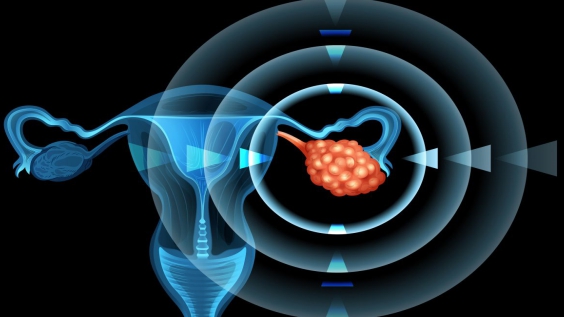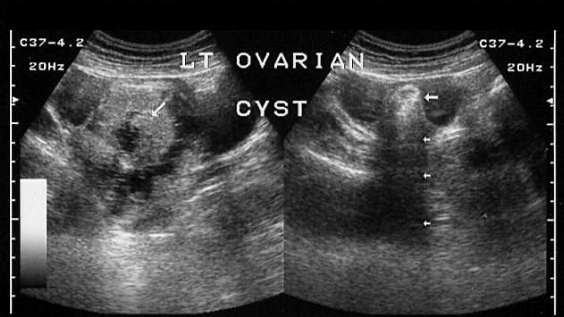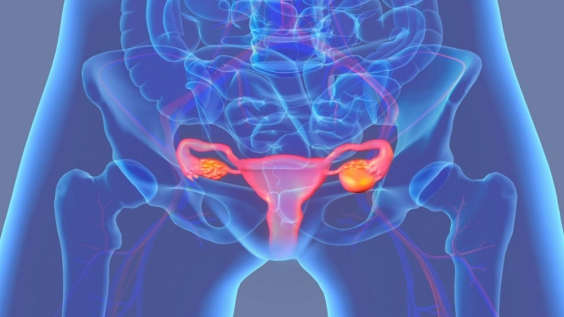Ovarian cysts are fluid-filled sacs or pockets within or on the surface of an ovary. Women have two ovaries — each about the size and shape of an almond — located on each side of the uterus. Eggs (ova) develop and mature in the ovaries and are released in monthly cycles during your childbearing years.
Many women have ovarian cysts at some time during their lives. Most ovarian cysts present little or no discomfort and are harmless. The majority of ovarian cysts disappear without treatment within a few months.
However, ovarian cysts — especially those that have ruptured — sometimes produce serious symptoms. The best ways to protect your health are to know the symptoms that may signal a more significant problem and to schedule regular pelvic examinations.
Most cysts don’t cause any symptoms and go away on their own. A large ovarian cyst can cause abdominal discomfort. If a large cyst presses on your bladder, you may feel the need to urinate more frequently because bladder capacity is reduced.
The signs and symptoms of ovarian cysts, if present, may include:
- Pelvic pain — a dull ache that may radiate to your lower back and thighs
- Pelvic pain shortly before your period begins or just before it ends
- Pelvic pain during intercourse (dyspareunia)
- Pain during bowel movements or pressure on your bowels
- Nausea, vomiting or breast tenderness like that experienced during pregnancy
- Fullness or heaviness in your abdomen
- Pressure on your bladder that causes you to urinate more frequently or have difficulty emptying your bladder completely.
Most ovarian cysts develop as a result of the normal function of your menstrual cycle. These are known as functional cysts. Other types of cysts are much less common.
Functional cysts
Your ovaries normally grow cyst-like structures called follicles each month. Follicles produce the hormones estrogen and progesterone and release an egg when you ovulate. Sometimes a normal monthly follicle keeps growing. When that happens, it is known as a functional cyst. There are two types of functional cysts:
Follicular cyst. Around the midpoint of your menstrual cycle, an egg bursts out of its follicle and travels down the fallopian tube in search of sperm and fertilization. A follicular cyst begins when something goes wrong and the follicle doesn’t rupture or release its egg. Instead it grows and turns into a cyst.
Corpus luteum cyst. When a follicle releases its egg, the ruptured follicle begins producing large quantities of estrogen and progesterone for conception. This follicle is now called the corpus luteum. Sometimes, however, the escape opening of the egg seals off and fluid accumulates inside the follicle, causing the corpus luteum to expand into a cyst.
Some women develop less common types of cysts that may not produce symptoms, but that a doctor may find during a pelvic exam. Cystic ovarian masses that develop after menopause may be cancerous (malignant). That’s why it’s important to have regular pelvic exams.
Infrequent complications associated with ovarian cysts include:
- Ovarian torsion. Cysts that become large may cause the ovary to move out of its usual position in the pelvis. This increases the chance of painful twisting of your ovary, called ovarian torsion.
- Rupture. A cyst that ruptures may cause severe pain and lead to internal bleeding.
KJnature.com Ovarian Cysts Treatment Kit is a sure bet for total and permanent solution without any negative side effects.






Leave a Reply
You must be logged in to post a comment.